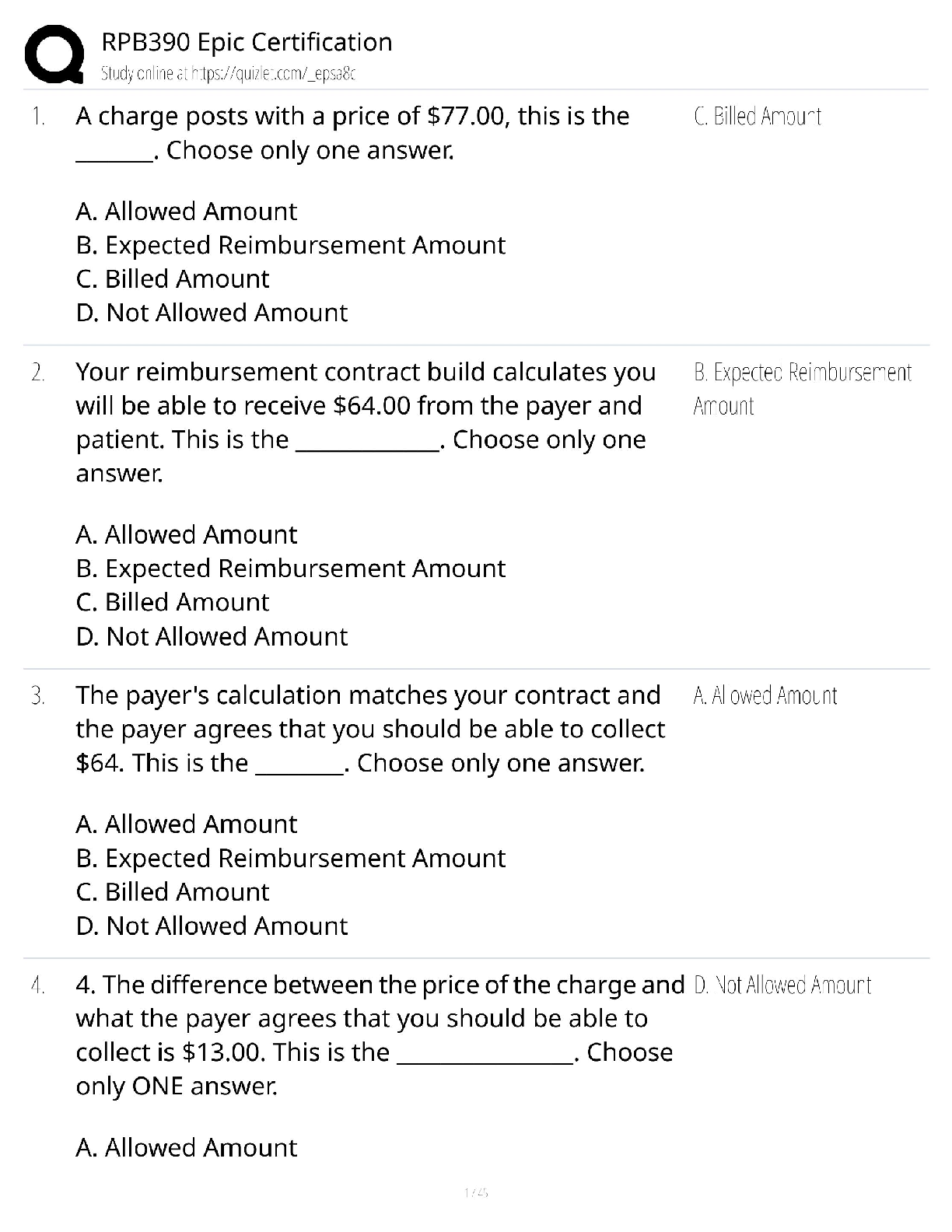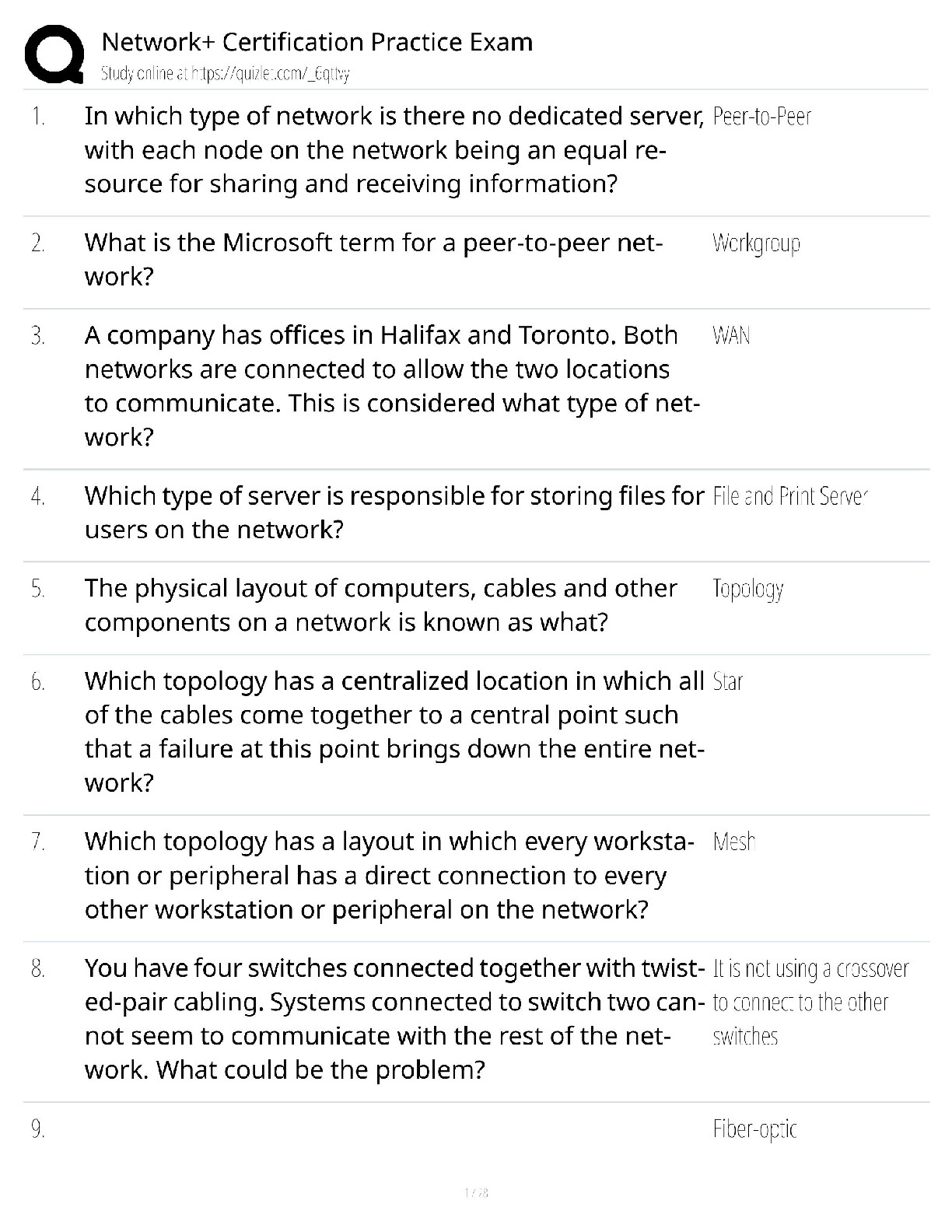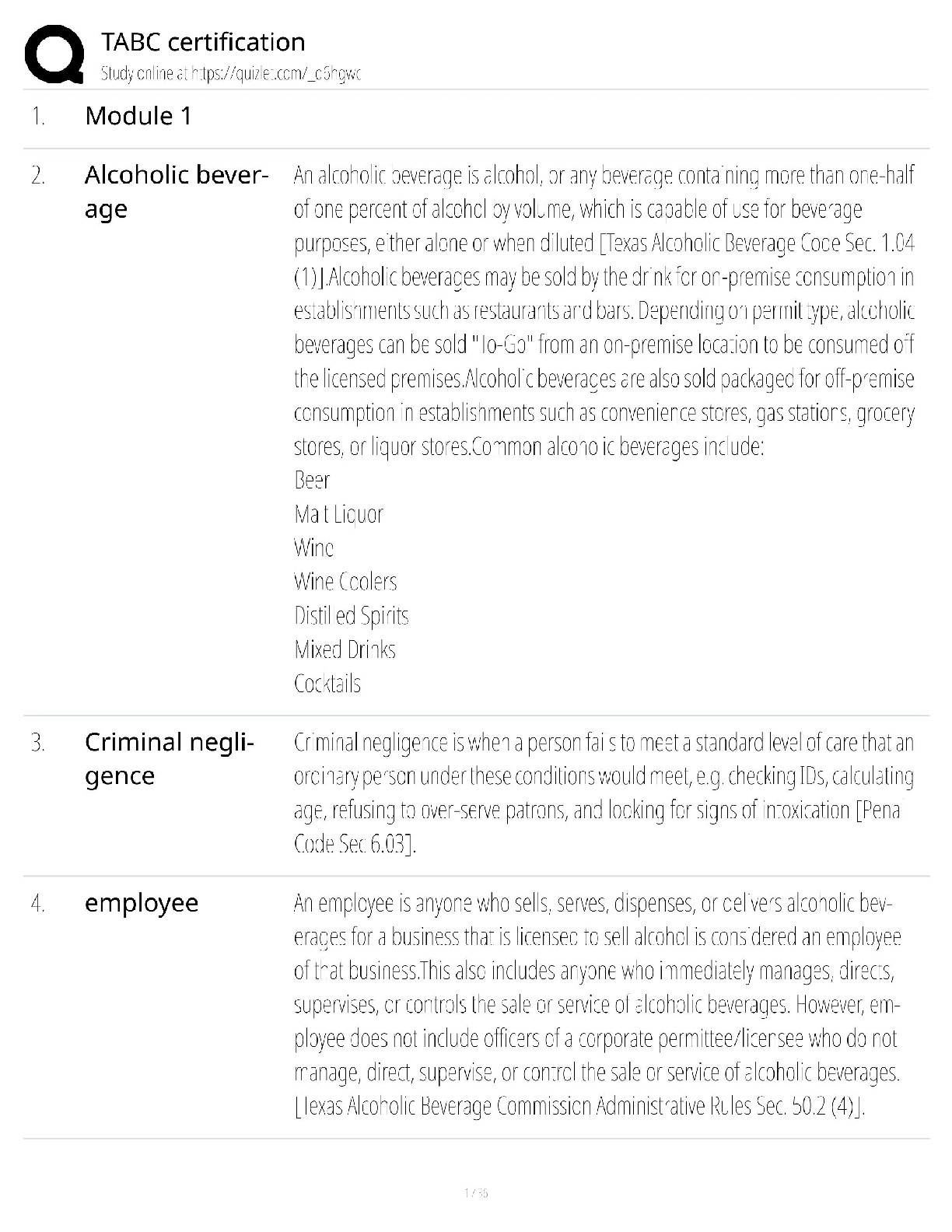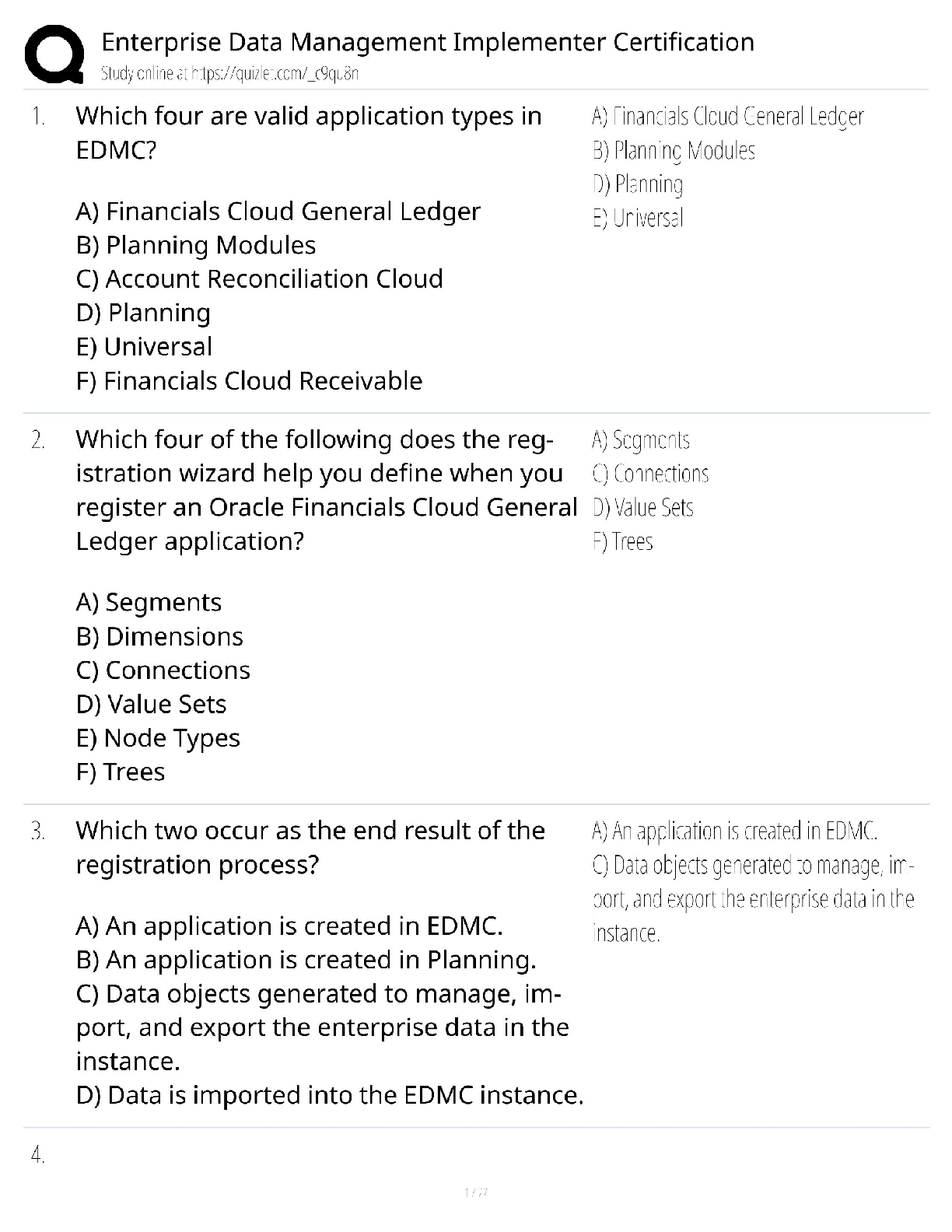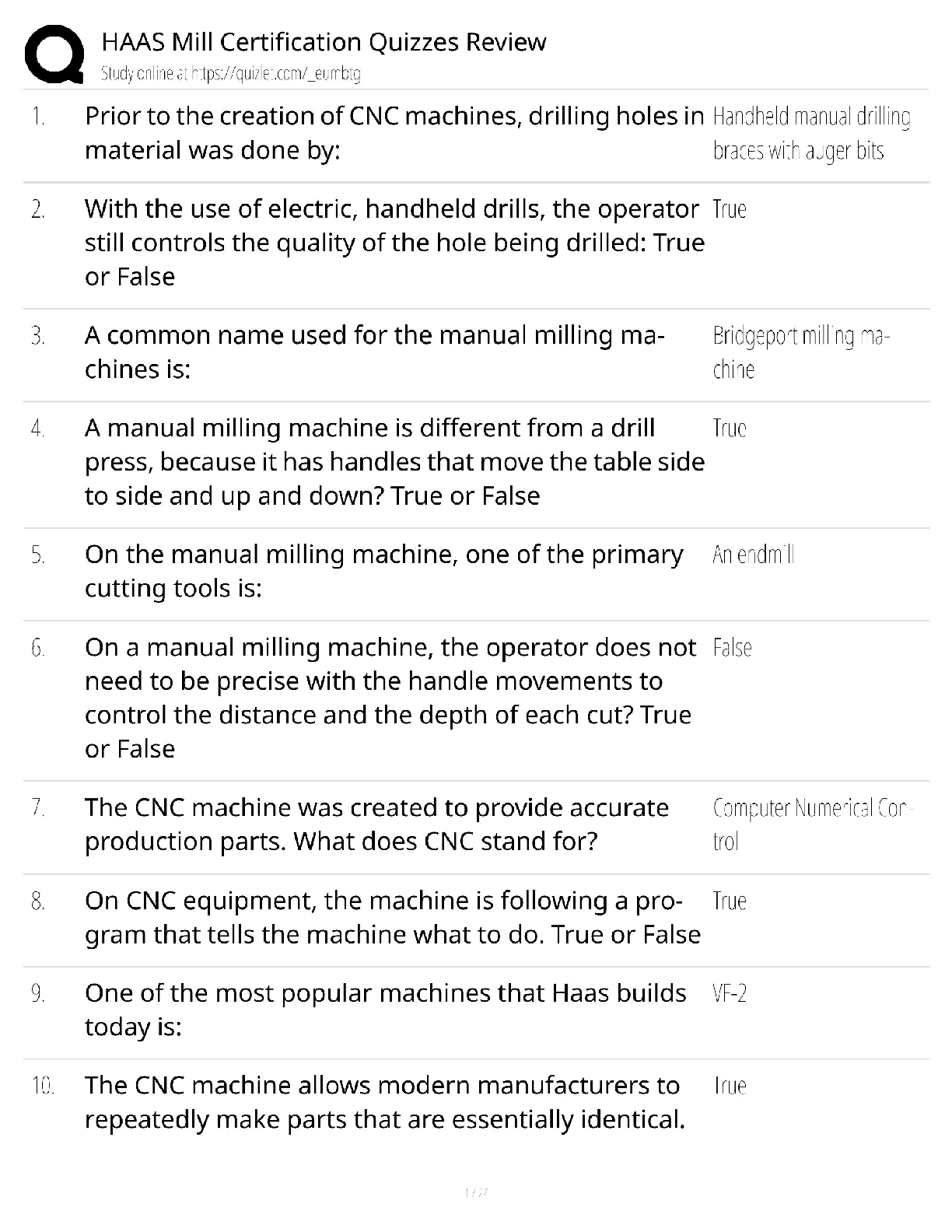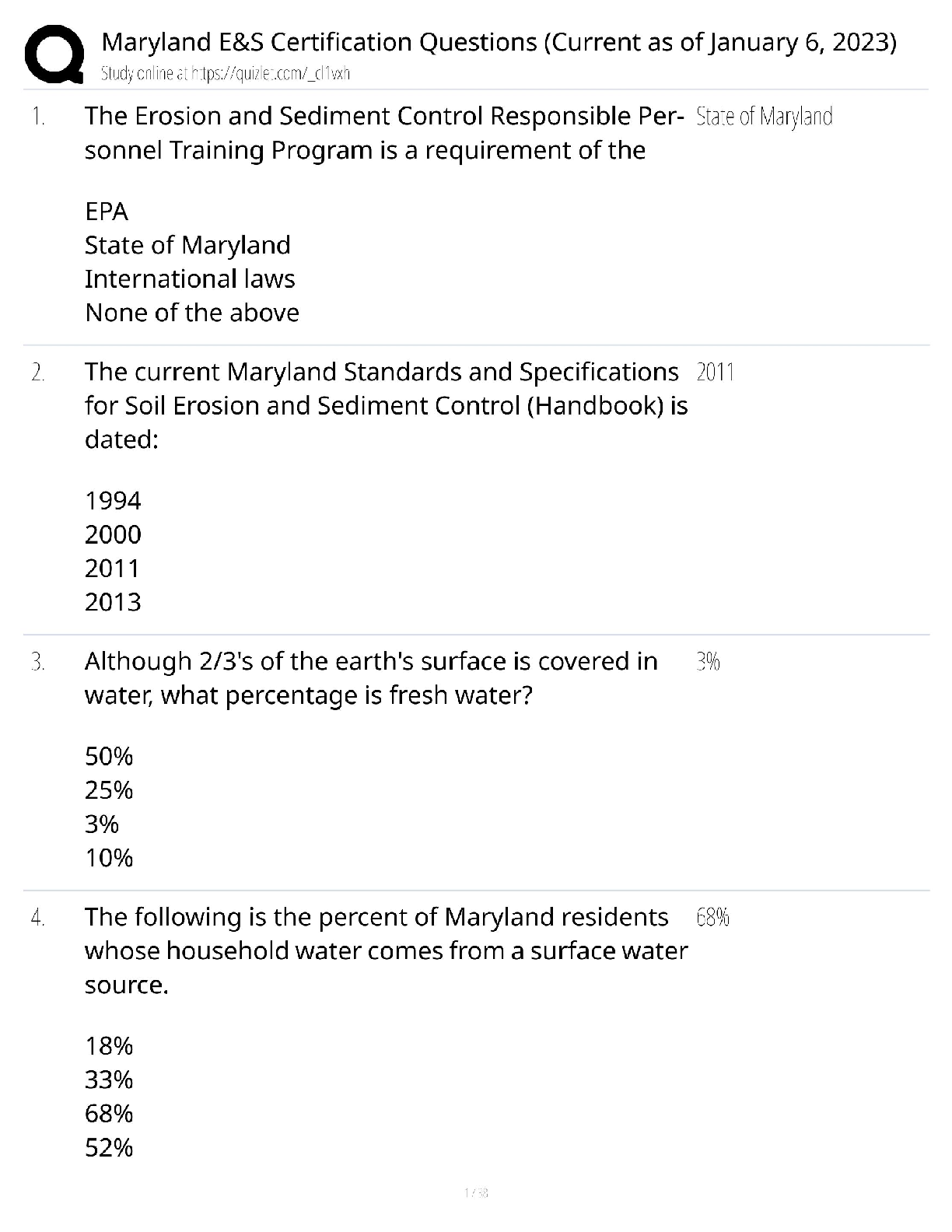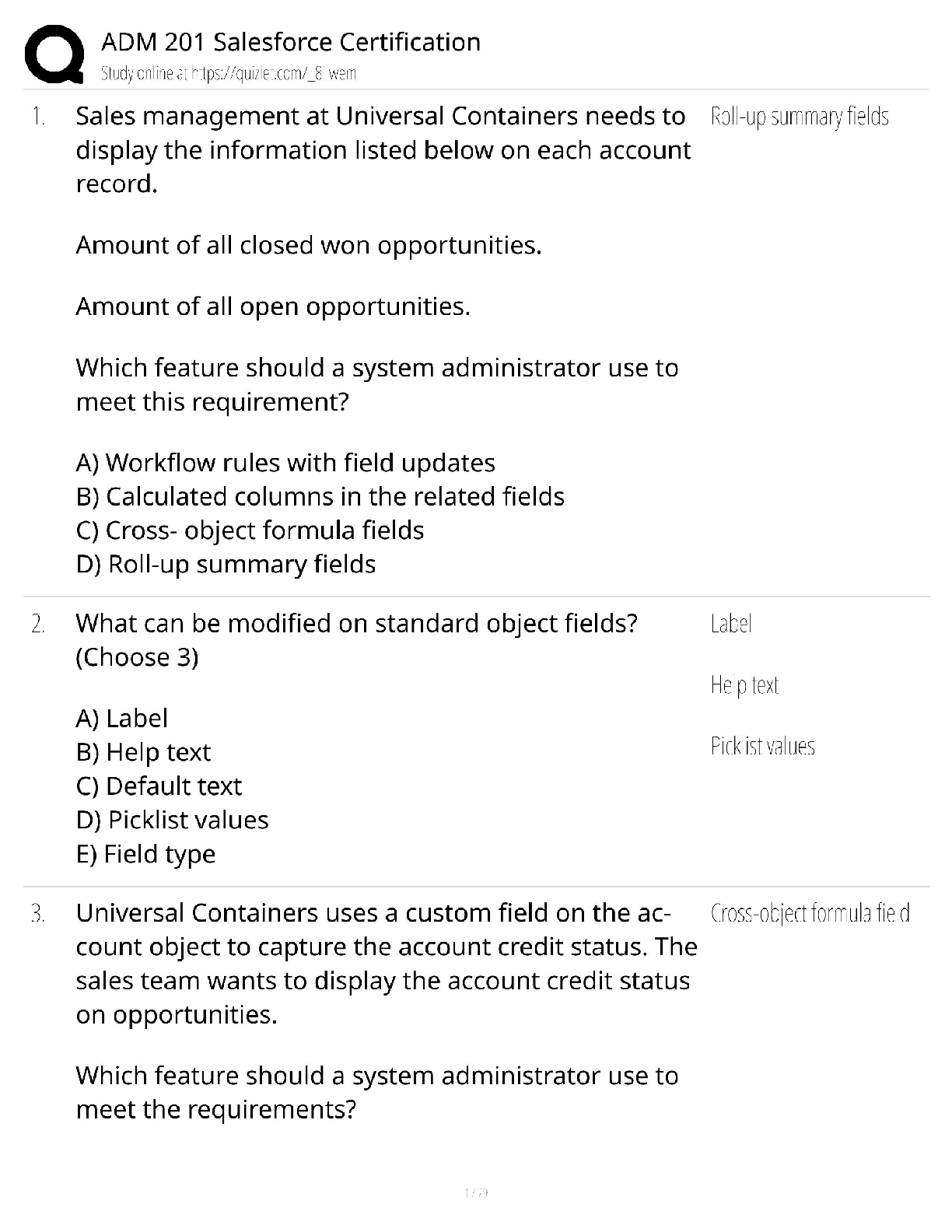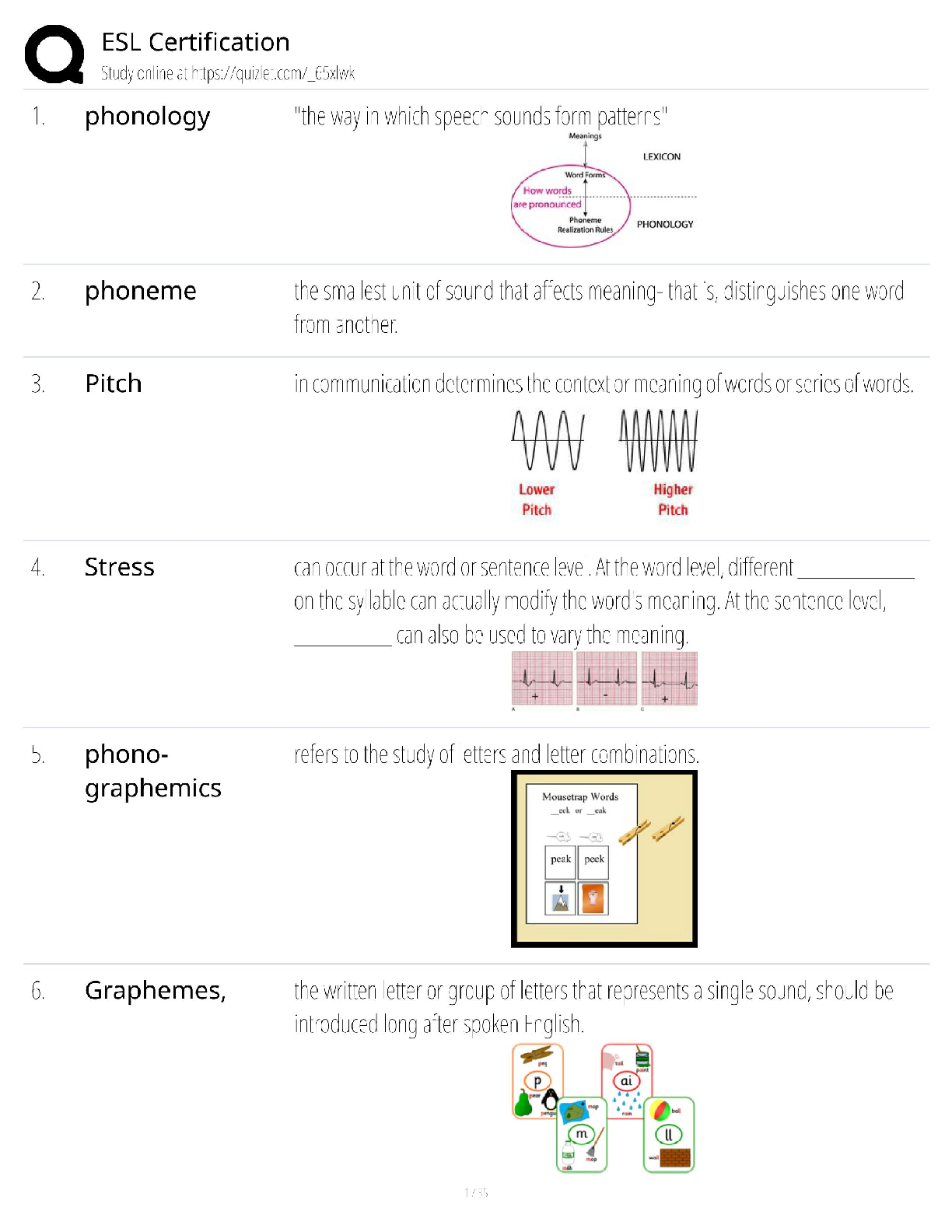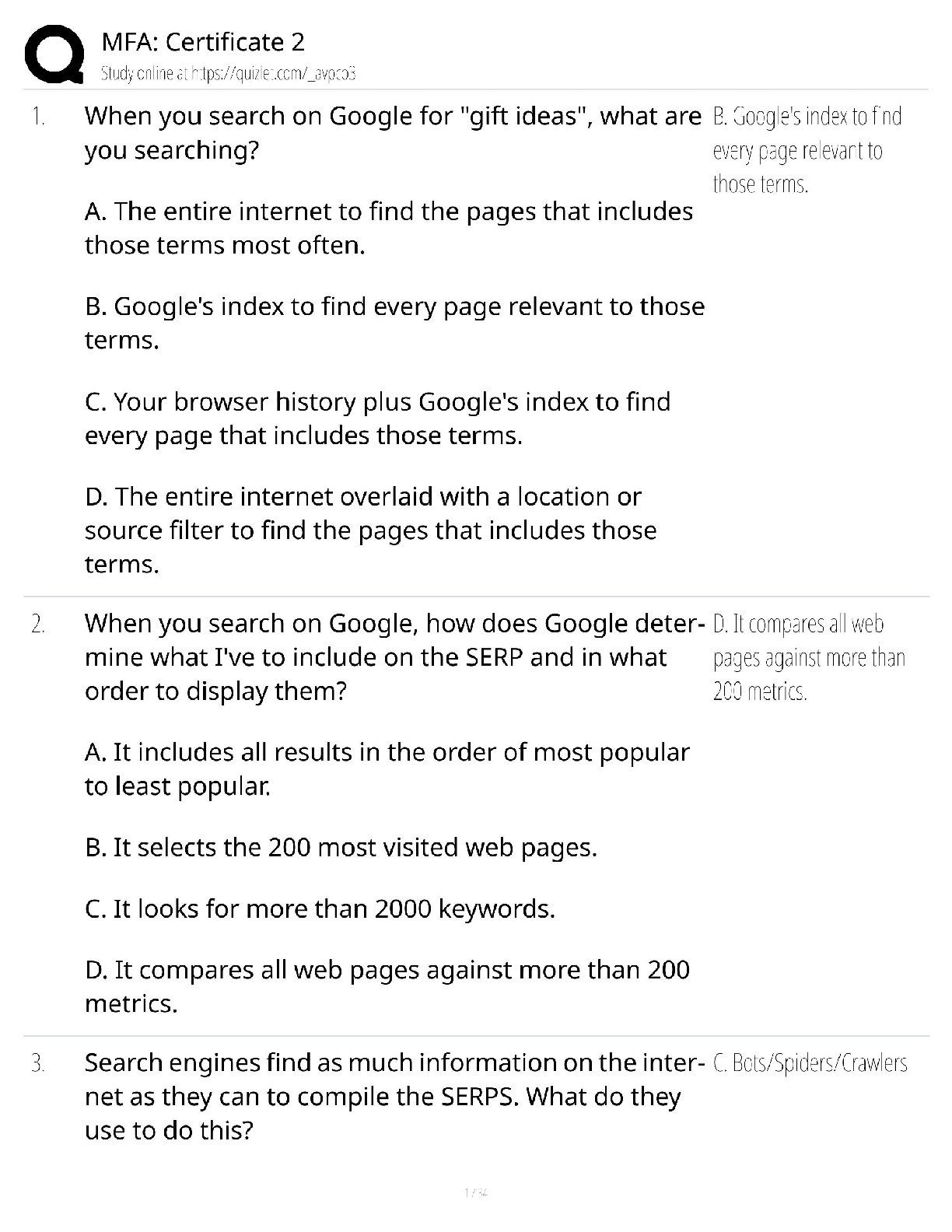*NURSING > QUESTIONS & ANSWERS > PALS Questions and Answers with Complete Solutions Latest Updated 2022; Already Passed (All)
PALS Questions and Answers with Complete Solutions Latest Updated 2022; Already Passed
Document Content and Description Below
PALS Questions and Answers with Complete Solutions Latest Updated 2022; Already Passed You are caring for a child who was resuscitated after a drowning event. The child is intubated and ventilated ... with 100% oxygen with equal breath sounds and exhaled CO2 detected. The heart rate is slow and the monitor shows sinus bradycardia. The skin is cool, mottled, and moist; distal pulses are not palpable and the central pulses are weak. Intravenous access has been established. The core temperature is 37.3oC. Based on the PALS bradycardia algorithm, which of the following should be provided first? Epinephrine IV Transcutaneous pacing Atropine IV Dobutamine IV infusion Correct Answer-Epinephrine IV You are caring for a 5-year-old patient with supraventricular tachycardia (heart rate = 220/min). The child is lethargic. The skin is pale and cool with delayed capillary refill. Distal pulses are not palpable. Which of the following would be the best treatment to provide without delay? Place cold packs on the distal upper and lower extremities Ask the child to blow through a small straw Exert light pressure on the eyes bilaterally Provide synchronized cardioversion at 0.5 to 1 J/kg Correct Answer-Provide synchronized cardioversion at 0.5 to 1 J/kg You are initiating treatment for a child with septic shock and hypotension. While administering high-flow oxygen you determine that the child's respirations are adequate and SpO2 is 100%. You have just established vascular access and obtained blood samples. Which of the following is the next most appropriate therapy to support systemic perfusion? Administer repeated fluid boluses of isotonic colloid Administer repeated fluid boluses of isotonic crystalloid Begin immediate dopamine infusion Begin immediate dobutamine infusion Correct Answer-Administer repeated fluid boluses of isotonic crystalloid You are treating an 8-year-old with ventricular tachycardia with pulses and adequate perfusion. You attempted synchronized cardioversion without success. While seeking expert consultation, it would be most appropriate to: Administer a loading dose of milrinone Consider possible metabolic and toxicologic causes Initiate overdrive pacing transcutaneously Deliver an unsynchronized shock Correct Answer-Consider possible metabolic and toxicologic causes You are caring for a 2-year-old unconscious patient who is intubated and receiving mechanical ventilation. The child's heart rate suddenly drops to 40/min and his color becomes mottled. You should respond to these changes by: Increasing the ventilator rate Increasing tidal volume Increasing positive end-expiratory pressure (PEEP) Using a resuscitation bag provide manual ventilation with 100% oxygen Correct Answer-Using a resuscitation bag provide manual ventilation with 100% oxygen You are caring for a 9-month-old patient with pronounced respiratory distress. You initiated high-flow oxygen using a nonrebreathing mask about 10 minutes ago and established intravenous access. Initially the infant's heart rate was in the 150/min range with strong pulses. Suddenly the infant's respiratory rate falls to 6/min with significant intercostals retractions, and little air movement is heard. The infant becomes cyanotic and the heart rate decreases to 95/min. Which of the following treatments would be best for you to provide now? Administer epinephrine IV Provide bag-mask ventilation Administer magnesium sulfate IV Intubate and ventilate Correct Answer-Provide bag-mask ventilation Which of the following is likely to be the most helpful technique to identify potentially reversible metabolic and toxic causes during the attempted resuscitation of a young child in cardiac arrest? Obtaining a urine sample for toxicology screen Obtaining chest and abdominal radiographs Soliciting a history from the caregiver or family Obtaining a venous blood gas Correct Answer-Soliciting a history from the caregiver or family You are caring for a patient who developed a tension pneumothorax after several hours of positive-pressure ventilation. Which of the following would be the most appropriate site for needle decompression? Over the third rib at the midclavicular line Under the eighth rib at the midaxillary line Over the fifth rib at the sternal border Under the sixth rib at the midclavicular line Correct Answer-Over the third rib at the midclavicular line You attempted synchronized cardioversion for an infant with supraventricular tachycardia (SVT) and poor perfusion. The SVT persists after the initial 1 J/kg shock. Which of the following should you attempt now? Synchronized cardioversion at a dose of 2 J/kg Synchronized cardioversion at a dose of 4 J/kg Unsynchronized cardioversion at a dose of 2 J/kg Unsynchronized cardioversion at a dose of 4 J/kg Correct Answer-Synchronized cardioversion at a dose of 2 J/kg You are treating a 5-month-old with a 2-day history of vomiting and diarrhea. The patient is listless. The respiratory rate is 52/min and unlabored. The heart rate is 170/min and pulses are present but weak. Capillary refill is delayed. You are administering high-flow oxygen, and intravenous access is in place. At this point the most important therapy is to: Administer an epinephrine bolus Begin bag-mask ventilation Provide a rapid 20 ml/kg isotonic crystalloid fluid bolus Administer a bolus of 0.5 g/kg of dextrose Correct Answer-Provide a rapid 20 ml/kg isotonic crystalloid fluid bolus Which of the following groups of clinical findings would be most consistent with categorizing a patient with compensated shock? Normal systolic blood pressure, decreased level of consciousness, cool extremities with delayed capillary refill, and faint or nonpalpable distal pulses Decreased level of consciousness, extensor posturing in response to pain, hypertension, and apnea Normal blood pressure, normal level of consciousness, bounding distal pulses, hypercarbia, hypoxemia, and normal urine output [Show More]
Last updated: 3 years ago
Preview 1 out of 17 pages
.png)
Buy this document to get the full access instantly
Instant Download Access after purchase
Buy NowInstant download
We Accept:

Also available in bundle (2)
Click Below to Access Bundle(s)
.png)
PALS BUNDLED EXAMS QUESTIONS AND ANSWERS ALREADY PASSED
PALS BUNDLED EXAMS QUESTIONS AND ANSWERS ALREADY PASSED
By Nutmegs 2 years ago
$27
25
.png)
PALS Bundled Exams with complete solutions(Everything is here)
PALS- Pediatric Advanced Life Support Exam 2022(Graded B+) PALS - Written Test and Case Study Review Material with complete solution PALS - Red Cross Final Exam 2021(Already graded A) 50 Questions and...
By Nutmegs 3 years ago
$20
13
Reviews( 0 )
$10.00
Can't find what you want? Try our AI powered Search
Document information
Connected school, study & course
About the document
Uploaded On
Aug 07, 2022
Number of pages
17
Written in
All
Additional information
This document has been written for:
Uploaded
Aug 07, 2022
Downloads
0
Views
243





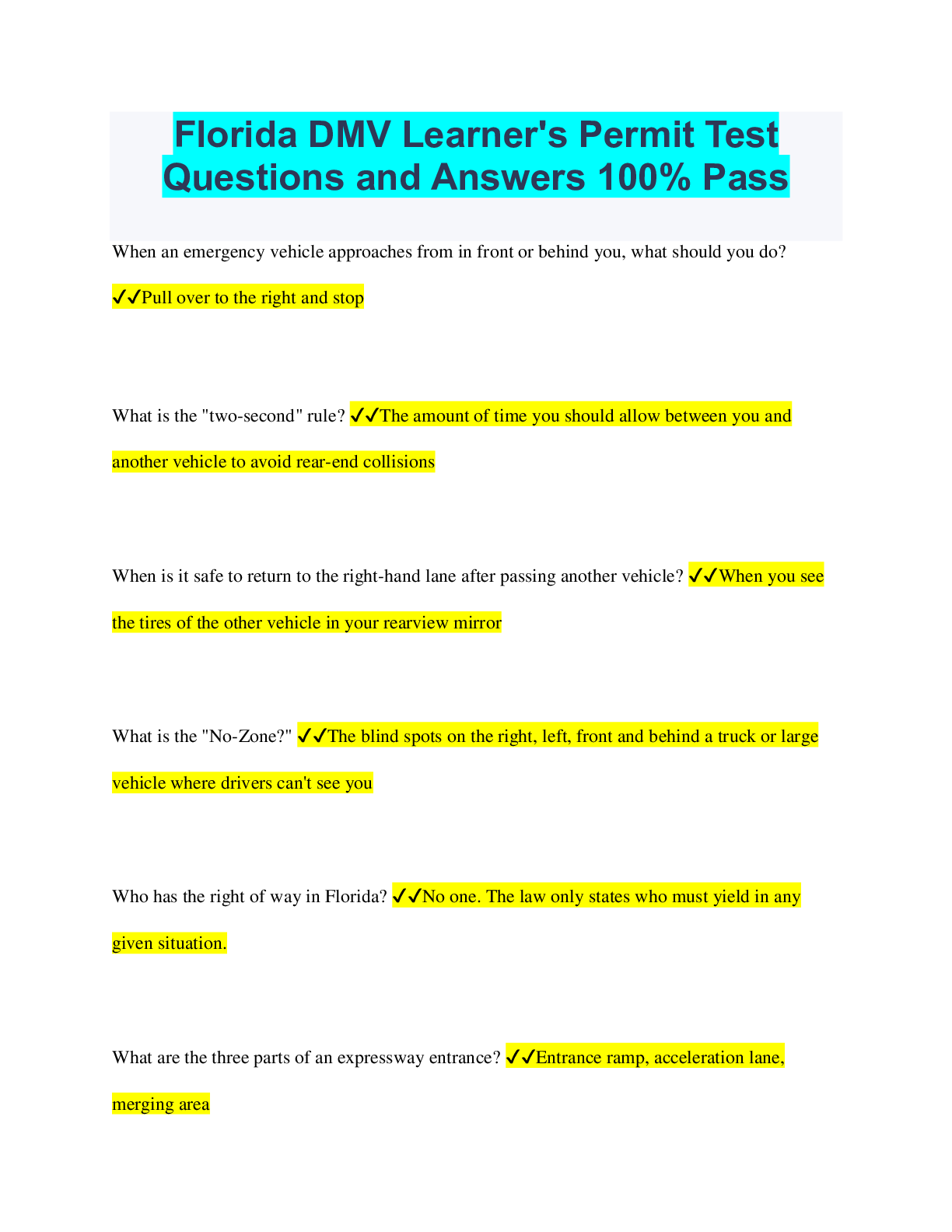
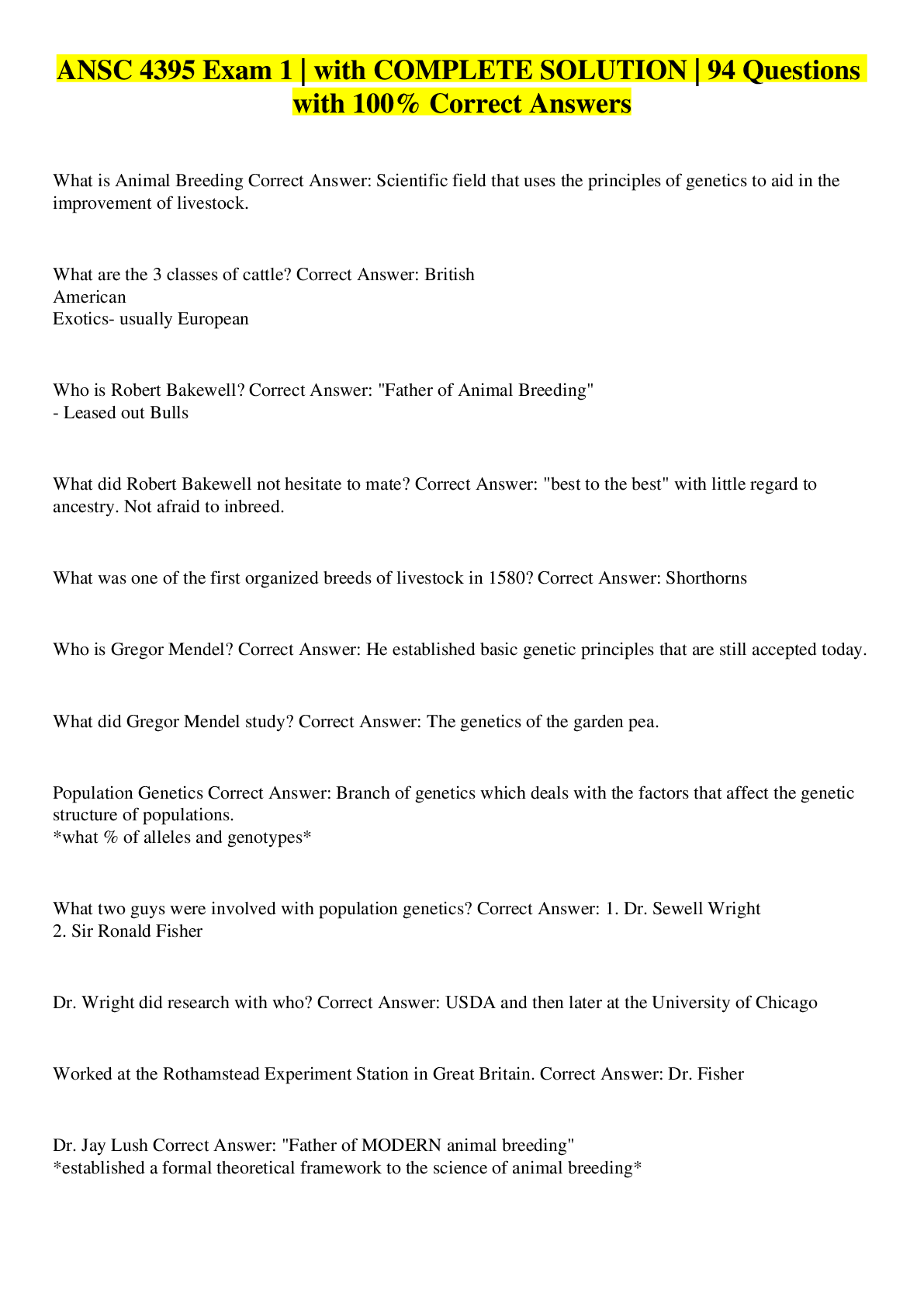

.png)





